| |
| |
Photographer,
Location |
Images |
Comments |
|

|
Patrick Boomer,
Southwest of Red Deer, Alberta, Canada
Jul. 5, 2007 |
#1,
#2 |
Quite an introduction
to noctilucent clouds for me this week. Had never seen them
here at 52º north before--and now twice in a week. These
were much brighter and seemed more dense than the showing
on July 1. Beautiful! |
|
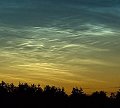
|
Rick
Klawitter,
Port Angeles, Washington, USA
Jul. 3, 2007 |
#1 |
This
is our first sighting of noctilucent clouds. We were surprised
to see them so late, an hour and a half past sunset. We
first noticed them at 10:30PM PDT. By 11:15PM PDT, they
had pretty much faded from view.
Photo
details: Nikon
D200, 30 second exposure at ISO 200, f8, 150mm. |
|

|
Keith
Harrington,
Port Angeles, Washington, USA
Jul. 3, 2007 |
#1 |
We
watched the sunset from Huricane Ridge in the Olympic National
Park. Coming down the mountain at about 22:30 looking NW,
from about the 3000 foot elevation, we saw NLC over Vancouver
Island and the lights of Victoria, Canada.
Photo
details: Nikon
Coolpix 8800, 2s exposure, 100 ASA |
|
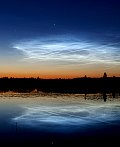
|
Donatas
Tamonis,
Near Kaunas, Lithuania
Jul. 3, 2007 |
#1 |
Look
into a cloud and what
do you see? A flying elephant? A mouse? A dragon? Finding
shapes in clouds is called nephelococcygia (refs: #1,
#2).
On July 3, 2007, Lithuanian photographer Donatas Tamonis
conducted noctilucent nephelococcygia. "This bright
noctilucent cloud reminded me of a giant squid," he
says. "Clouds often take various shapes that remind
us of something. Noctilucent clouds are no exception." |
|
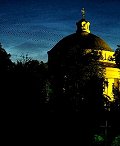
|
Darius
Gasiunas,
Vilnius, Lithuania
Jul. 2, 2007 |
#1,
#2, #3 |
Photo
details: Pentax
ist DS, f 50mm, f/4. (1) 400 ASA, exp 4 sek; (2) 200
ASA, exp 6 sek; (3) 400 ASA, exp 4 sek; |
|
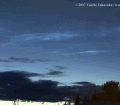
|
Yuichi Takasaka,
New Aiyansh, British Columbia, Canada
Jul. 2, 2007 |
#1,
#2 |
I was waiting to photograph moonrise but the southern sky was totally cloudy. I looked the north and NLC were out there in the small pocket of cloudless sky. It only lasted about a half hour.
12:24 to 12:50 PST for the GIF animation.
|
|
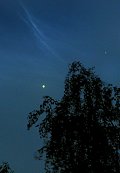
|
Freek
van der Hulst,
Eindhoven, The Netherlands.
Jul. 2, 2007 |
#1 |
Last
night, after the clouds were disappeared, I saw Venus and
Saturn in the west, side-by-side. Ten minutes later appeared
some noctilucent clouds, and it was the first time I took
a photo of them. |
|
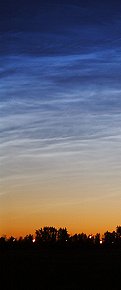
|
Steve Connelly,
South of Red Deer AB Canada
Jul. 1, 2007 |
#1 |
Very noticeable
in the north with the eye...glowing electric blue. Large
stitched photo is a panorama from NW-NE
Photo
details: Canon
10D, 30 sec exposures photostiched, ISO 100, f/4, 20mm |
|
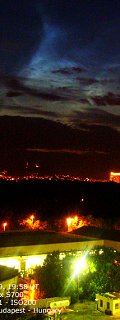
|
Hollosy Tibor,
Budapest, Hungary
Jun. 29, 2007 |
#1,
more |
Photo
details: Samsung
Digimax S700, ISO200, 8s exposure, F7.1 |
more
images (July 4): from
Alan Dyer near Cluny, Alberta, Canada; from
Jenaya Swenson of Svensen, Oregon, USA; from
"Mc" located between Ritzville and Lind, Washington
more
images (July 3): from
Charlie Burnside of Kent, Washington, USA; from Arvydas Cetyrkovskis
of Vilnius, Lithuania
|
|